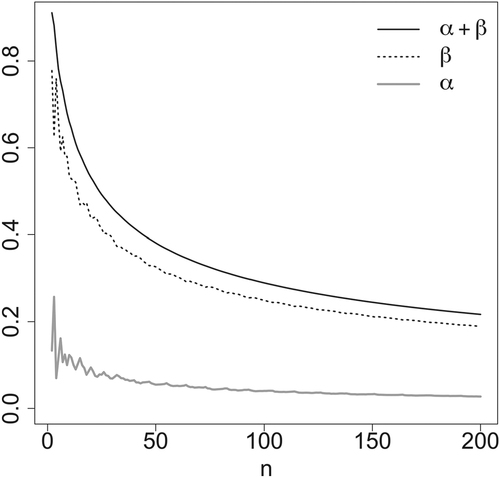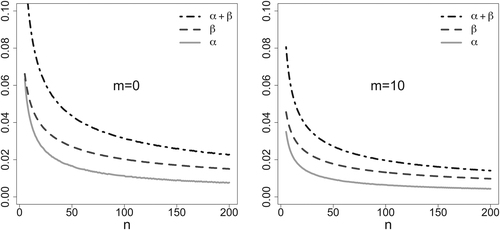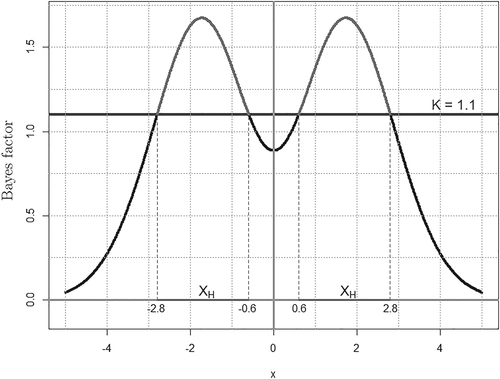Figures & data
Table 1 Bayes factor for all possible results in a clinical trial with two arms of size n = 8 each. Cells in boldface make up the region and the observed Bayes factor is shown in boldface italics. See text.
Fig. 1 Optimal averaged type-I (solid gray line), type-II (dotted line), and total (solid black line) error probabilities as functions of the number of patients n in each arm of a two-arm medical study.

Table 2 Optimal averaged error probabilities and
for comparison of two proportions for various arm sizes n1 and n2 in a two-arm medical study. Calculations were performed with a = b.



